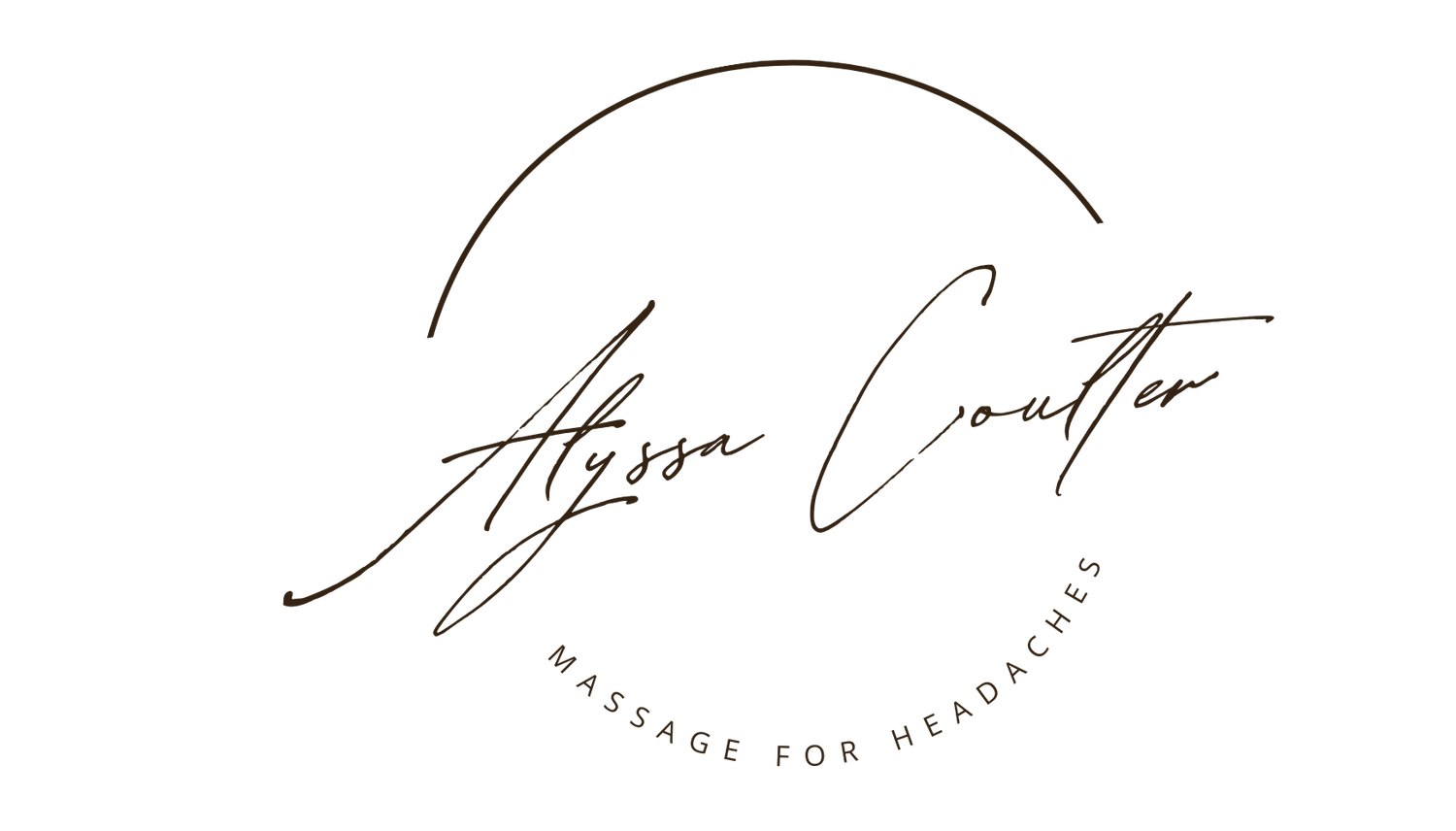What the Heck is TMJ Massage? Understanding the Techniques, Benefits, and How It Differs from Other Kinds of Massage
As a massage therapist specializing in TMJ massage, I often get questions about how my approach differs from a typical spa massage. It's a valid inquiry, and the surprising answer might be: there is no difference! Intrigued? Well, buckle up because in this all-encompassing guide, I'll guide you through the techniques, benefits, and distinctive aspects that distinguish TMJ massage from other massage forms. We'll decode the mysteries surrounding TMJ massage, providing insights into its uniqueness and the relief it can bring to individuals enduring chronic jaw and head pain.
What’s in a Name? Defining TMJ Massage
TMJ massage, short for temporomandibular joint massage, is a specialized therapeutic approach aimed at addressing issues related to the jaw joint and surrounding muscles. Unlike traditional massages that encompass the entire body, TMJ massage usually hones in on the intricate muscles responsible for jaw movement. Its primary goal is to alleviate TMJ pain and enhance overall jaw function. While the specific techniques employed during a TMJ massage may vary from practitioner to practitioner, the overarching objective remains consistent – providing targeted relief for those grappling with jaw pain and dysfunction.
Demystifying Intraoral Massage
One distinctive and often misunderstood feature of TMJ massage is the intraoral component. People are often surprised to learn that TMJ massage commonly incorporates intraoral work, but this approach can be very effective.
While the term might initially raise eyebrows, it’s much less invasive and… intense?... than it sounds. In short, it involves the gentle and targeted massage of the muscles inside the mouth that contribute to jaw movement. Some people, especially those in chronic pain, may shy away from the idea of a therapist poking at the very delicate parts of their jaw, but intraoral massage (or massage in general for that matter) should never be painful. And if you do it right, I think it can still be a relaxing modality, in addition to a therapeutic one.
I choose to work intraoral massage into the middle of my sessions, rather than starting or ending with intraoral techniques. It gives my clients a chance to relax before I start working inside their mouths, and afterwards, a chance to calm their nervous system back down before they get off the table. I’ll usually begin by warming up the muscles of the scalp and external jaw before gloving up and working on the muscles of the jaw that can only be accessed via the mouth. We take slow, deep breaths before each pass, encouraging the nervous system to remain relaxed during what can be a really vulnerable time.
As the girl who is quite literally drowning in her own spit in the dentist’s chair, I like to give my clients plenty of swallow breaks and I make sure never to stay in the mouth for more than 20 seconds at a time. I also like to establish a hand signal system with my clients to indicate whether they need more pressure, less pressure, or a break. It’s awkward to talk with someone else’s fingers in your mouth, and communication is so important for establishing safety and trust in the therapeutic relationship.
But here’s the thing, this technique is not obligatory, and a TMJ massage without intraoral massage is still a TMJ massage, so long as the focus is on providing targeted relief for TMJ related pain (at least in my book). Practitioners often tailor their approach based on the client's comfort level and preferences. If you’re on the fence about having intraoral work done, don’t worry, just skip it for now! Plenty of progress can still be made without it.
Other Popular Modalities for TMJ Massage
TMJ massage is not a one-size-fits-all approach and it often encompasses a variety of modalities and techniques beyond intraoral methods. From deep tissue massage to myofascial release, practitioners may employ a range of methods to address tension and pain in the jaw and surrounding areas. The versatility of TMJ massage lies in its adaptability to the unique needs of each individual, ensuring a personalized and comprehensive approach to jaw care.
Here are some modalities I like to incorporate in my TMJ massages:
- Intraoral Massage
- Neuromuscular Therapy
- Craniosacral Therapy
- Myofascial Release
- Cupping
- Swedish Massage
In my practice, no two massages are the same, and in my opinion, that’s how it should be! At the end of the day, massage is about interfacing with someone’s nervous system, applying the correct pressure, speed, and stretch to get someone’s brain to feel safe relaxing a muscle, and each person’s nervous system responds differently to stimuli. A 60-minute full-body hot stone and warm bamboo massage can be a TMJ massage, heck, a 20-minute foot massage can be a TMJ massage, if it helps relax the nervous system and ease the pain associated with TMJ dysfunction. So if your therapist’s protocol doesn’t look like mine, don’t write them off. TMJ massages can come in a variety of forms.
Not Just a Face Massage
TMJ massage is occasionally misconstrued as a glorified face massage. However, it transcends the superficial layers and delves into the deeper muscles associated with jaw movement. Unlike a facial, which primarily focuses on treating the skin of the face and neck, TMJ massage extends beyond the skin to the soft tissues underneath, and there is usually just as much focus on the muscles of the neck and shoulders as there is on the muscles of mastication (chewing).
Most of my TMJ massages that are 60+ minutes involve massage of other parts of the body besides the head, neck, and shoulders. Another area of focus is often the back because a lot of people with chronic neck and face pain also experience back pain, but I also spend a lot of my sessions incorporating hip work, foot and hand massage, and guided manual techniques to aid breathing. It’s not rare for me to end up giving a full body massage in my longer sessions. Remember, it’s all about the nervous system. If a client really loves a good calf massage, I’m going to make sure we spend some time on their lower legs because when the nervous system is happy and relaxed, healing can better take place.
It's a comprehensive approach aimed at addressing tension and discomfort for a holistic sense of relief. When seeking TMJ massage, it's essential to understand that the therapy goes beyond the facial surface, targeting specific muscles crucial for jaw functionality as well as muscles that contribute to accessory pains like those caused by certain postures, inadequate breathing, or stressful positions.
What should I wear to a TMJ Massage?
We’ve talked a lot so far about how different a TMJ-focused massage session can be from practitioner to practitioner. So it’s common to wonder what the dress code is for a TMJ massage. The answer, to a large extent, depends on the practitioner's techniques and the client's comfort level. Depending on the techniques involved and the comfort of the client, your therapist may recommend that you undress as you would for a typical Swedish massage. Just as commonly, they may expect you to keep all of your clothes on - confusing, I know. Your therapist should make their expectations clear before your first appointment, but ultimately, what you decide to wear will come down to your comfort level.
Personally, I like to lean into the stress-reduction aspect of massage during my TMJ massages, so I usually ask my clients to undress as they would for a trip to the spa. For some people this means all clothes off. For others, this means most clothes are off, but underwear stays on. For still others this means only the shoes come off and comfy clothes remain. It makes little difference to me, and should make little difference to your therapist too. A good massage therapist should be able to adapt their techniques based off your clothing.
What Kind of Practitioners Offer TMJ Massage?
TMJ massage is often provided by licensed massage therapists with specialized training in techniques targeting the jaw joint. Look for practitioners with experience in neuromuscular therapy, myofascial release, or those who have completed specific TMJ massage courses. Additionally, dentists and physical therapists may offer TMJ massage as part of their services, recognizing the interconnectedness of jaw health with overall well-being. When seeking a practitioner for TMJ massage, check out their training, experience, and specific techniques they incorporate into their sessions. This ensures you receive the most effective and tailored care for your individual needs.
Why Consider TMJ Massage
Incorporating TMJ massage into your wellness routine goes beyond providing physical relief. There's an indulgent and self-caring element to a massage that distinguishes it from a routine doctor's visit. The massage room becomes a sanctuary where you can switch off your mind, reconnect with your body, and let the therapist attend to your needs. For many individuals grappling with chronic pain, a massage is a rare opportunity to experience positive sensations in their jaw, offering a pleasant reminder of what comfort in the jaw and face feels like. Consider TMJ massage not just as a therapeutic remedy for physical discomfort but as a holistic approach to self-care. Its benefits transcend the session, contributing to an enduring sense of balance and overall well-being.
In Conclusion: A Tailored Approach to Jaw Care
In conclusion, TMJ massage is a nuanced and personalized approach to addressing TMJ pain and dysfunction. Whether it includes intraoral techniques or broader muscle therapy, the focus remains on individualized care to promote relief and improved jaw function. Consider exploring the benefits of TMJ massage for a tailored, comprehensive approach to jaw well-being. The journey to relief begins with understanding your unique needs and seeking out practitioners experienced in TMJ massage techniques that suit your body. Your jaw deserves the attention, care, and relief that TMJ massage can provide.
Additional Resources
4 Self-Massage Techniques for TMJ Disorders: A Guide to At-Home Jaw Relief




